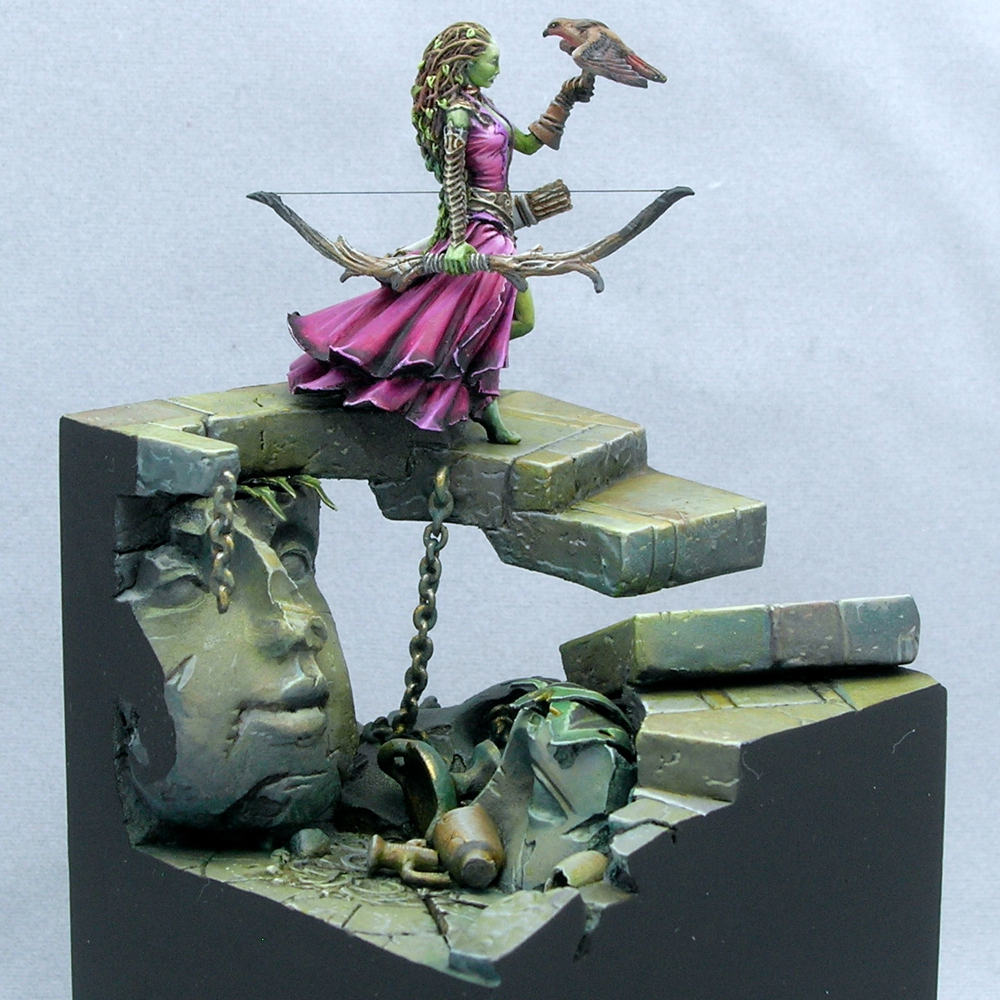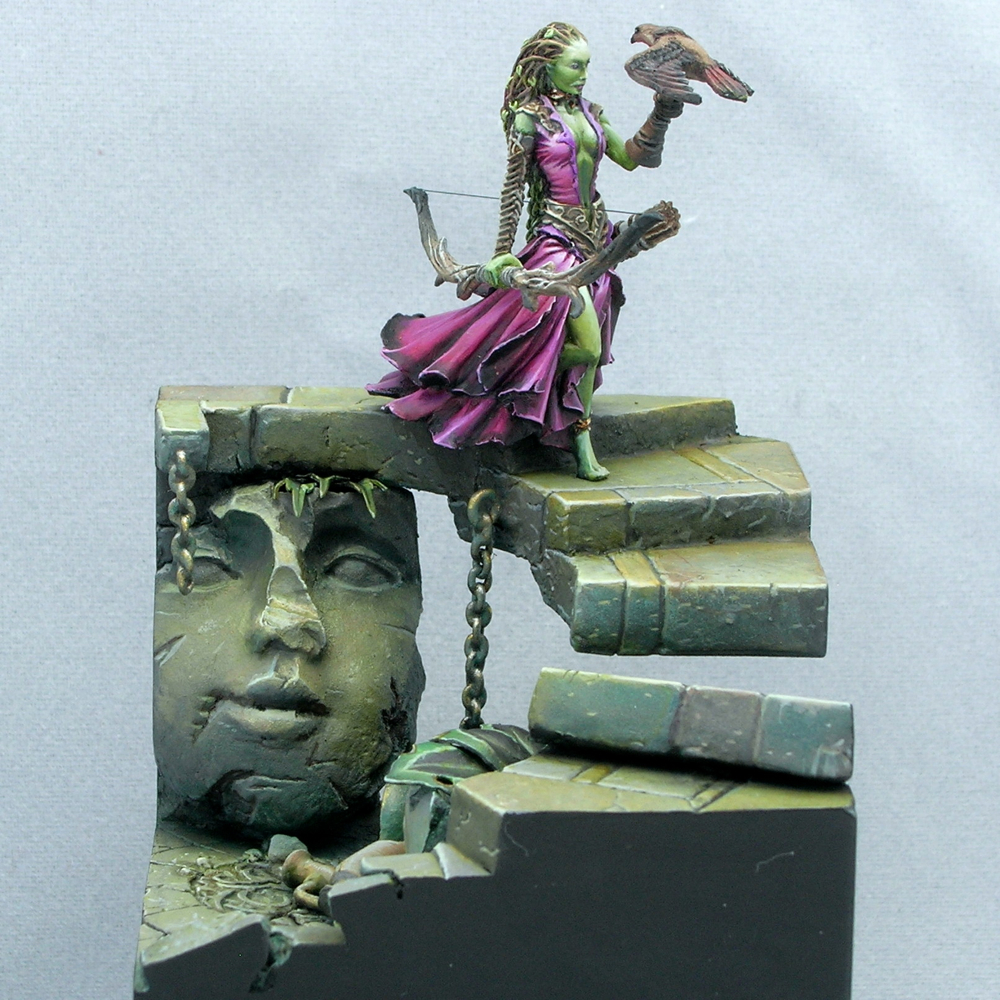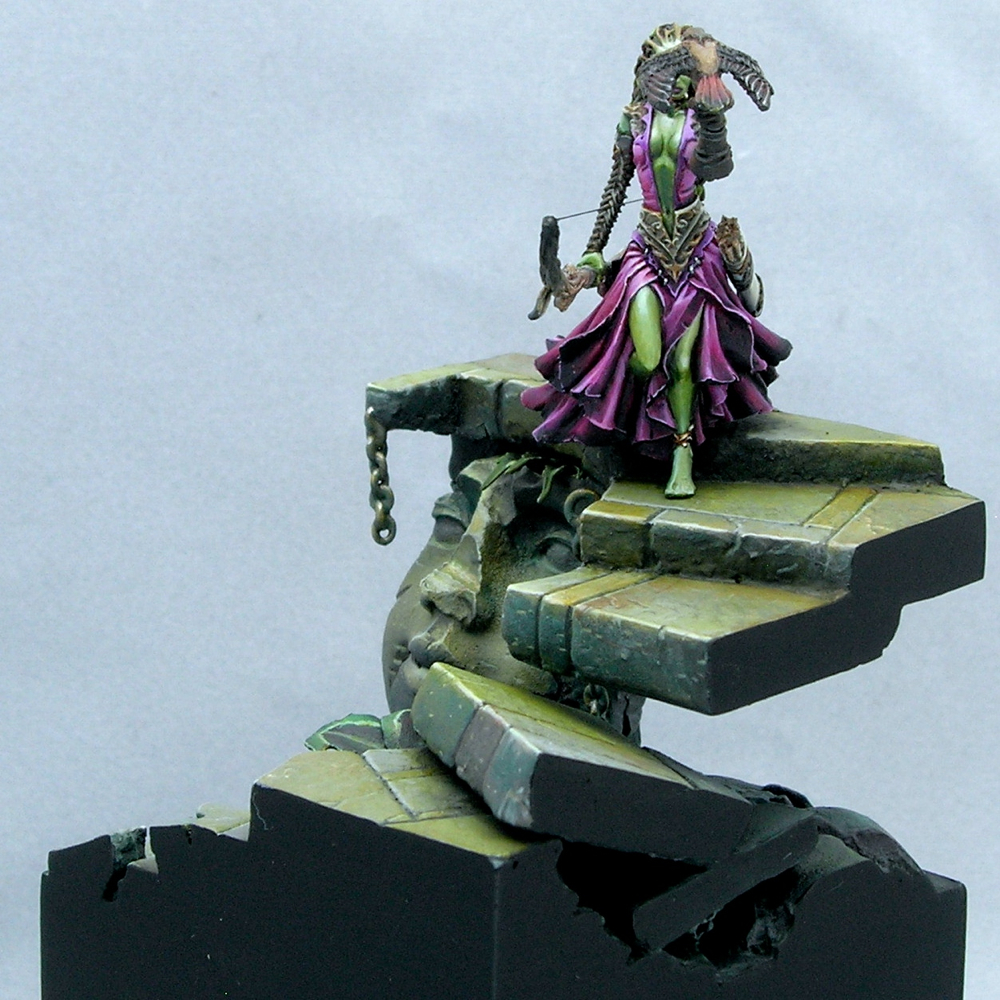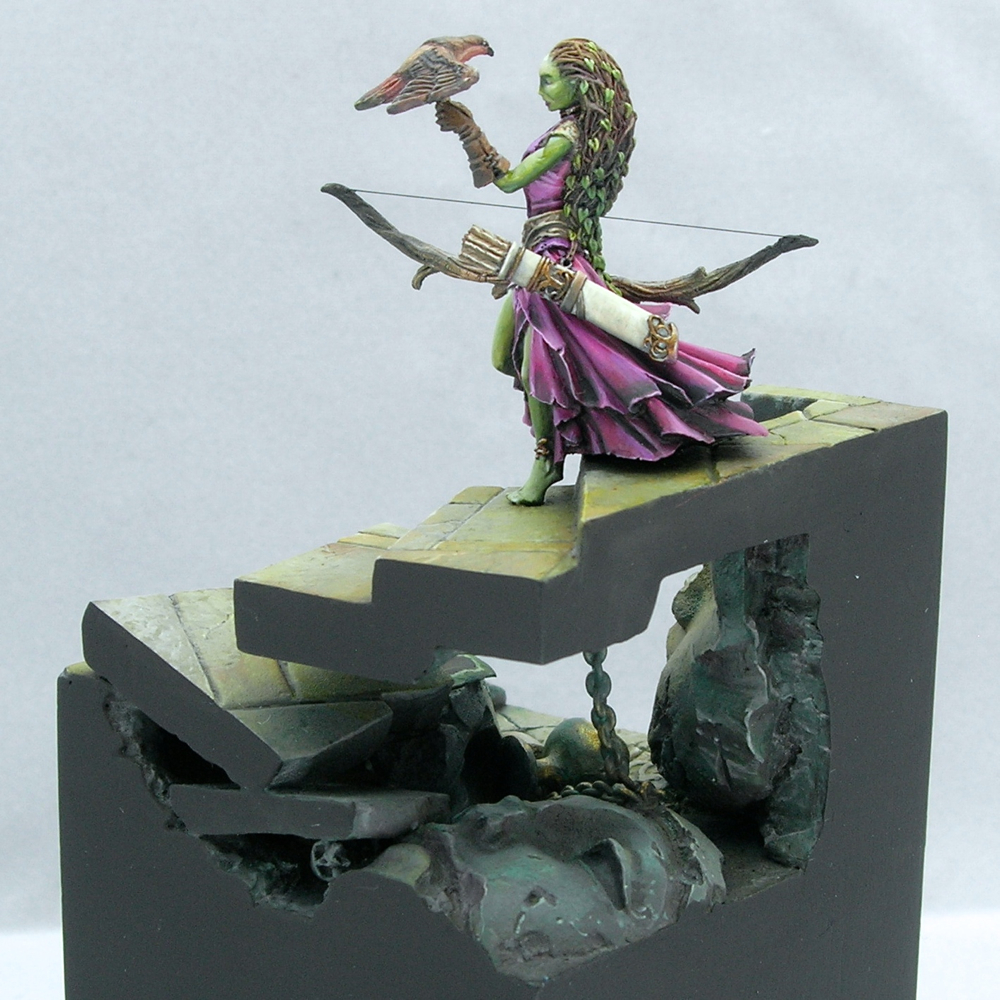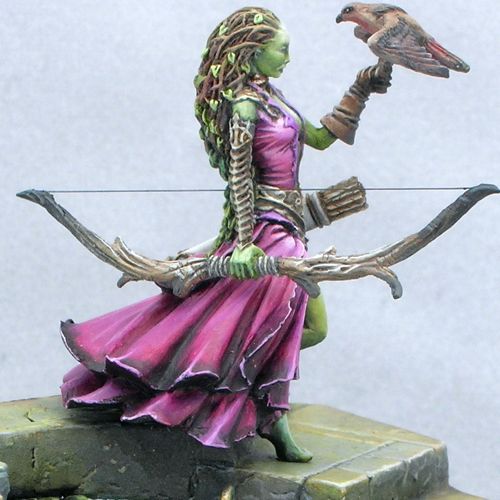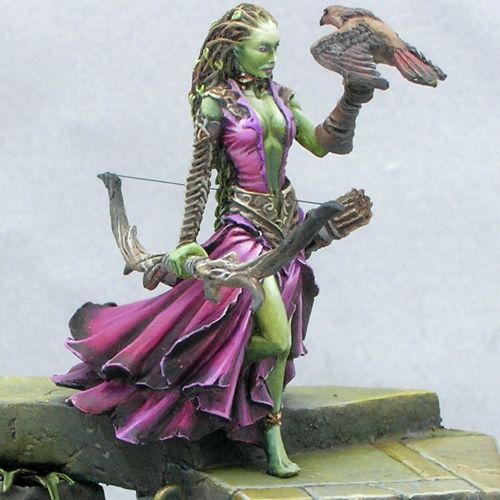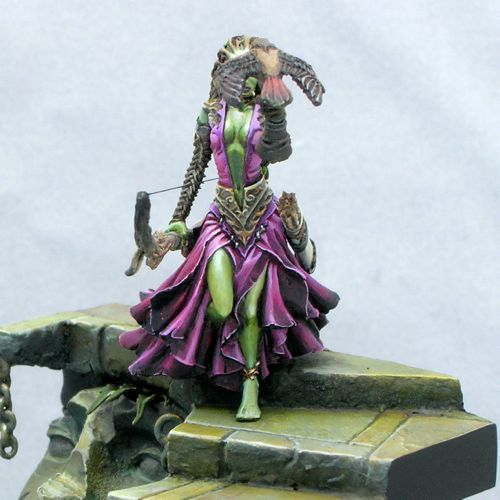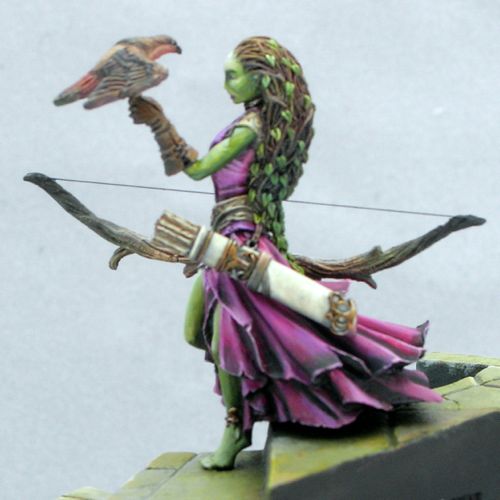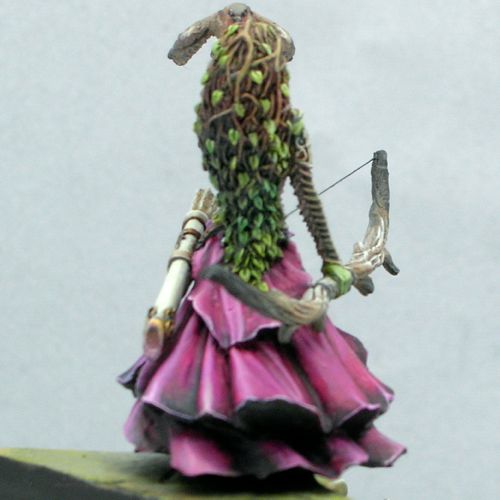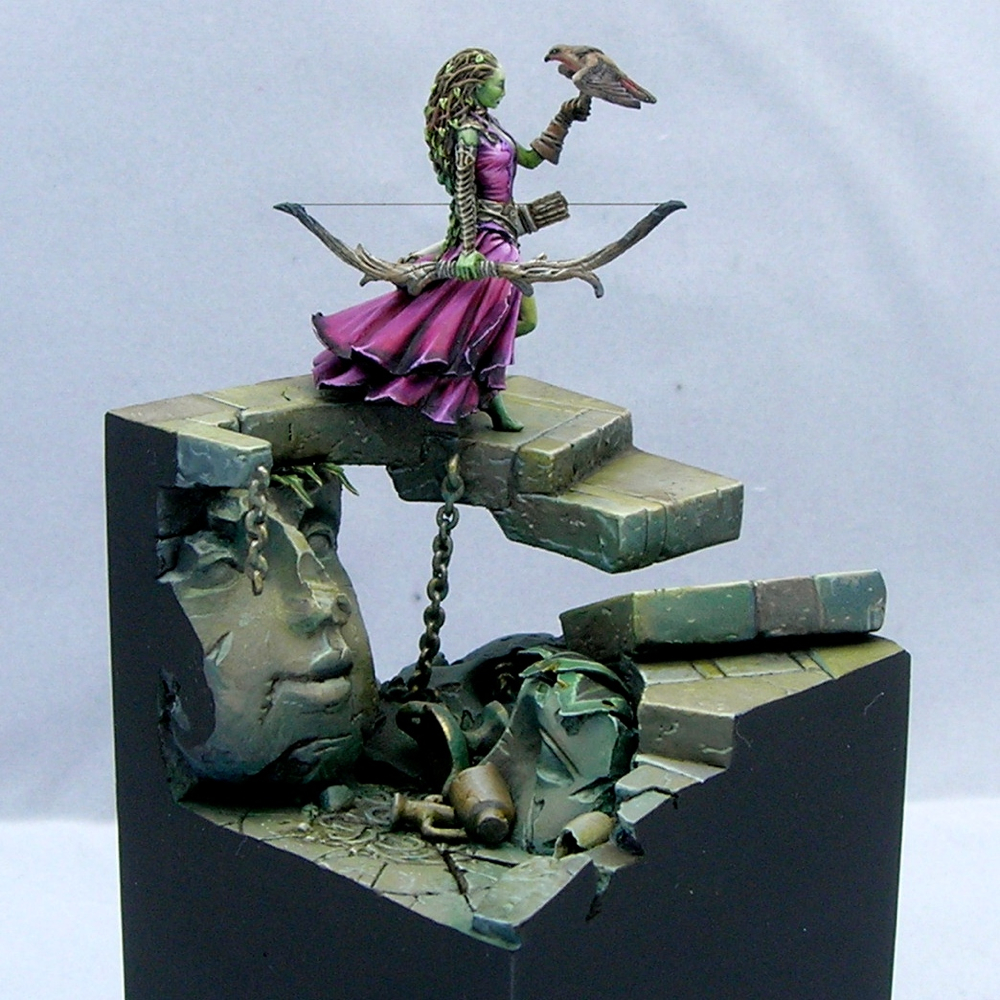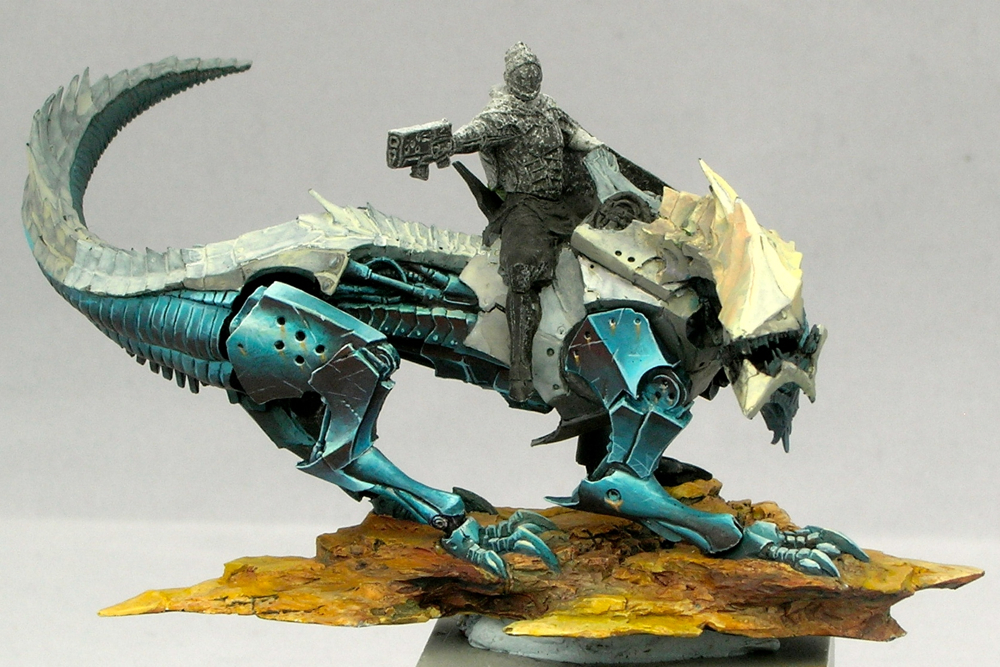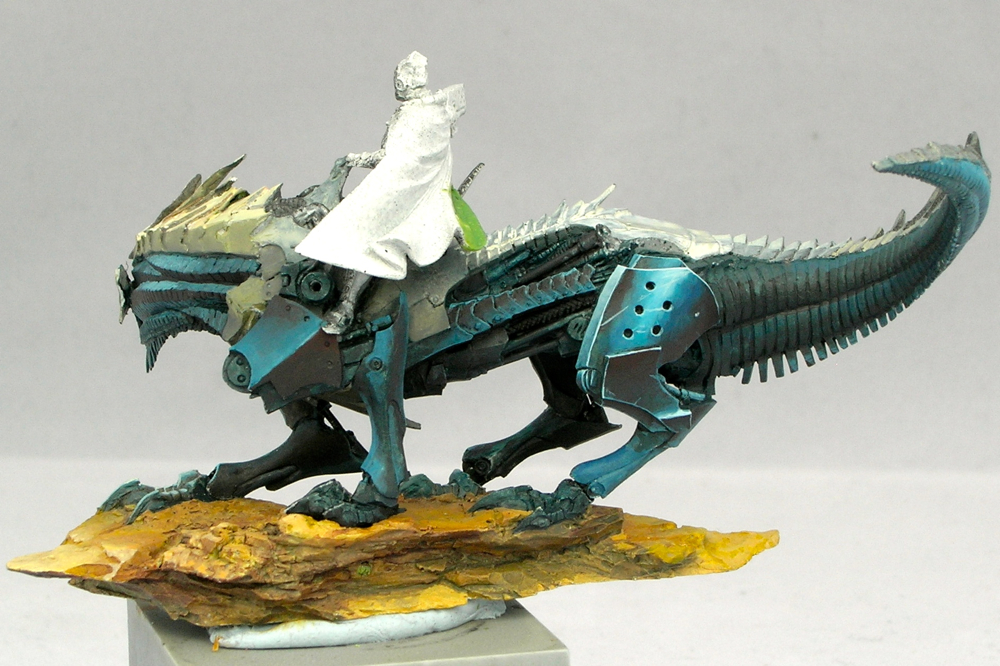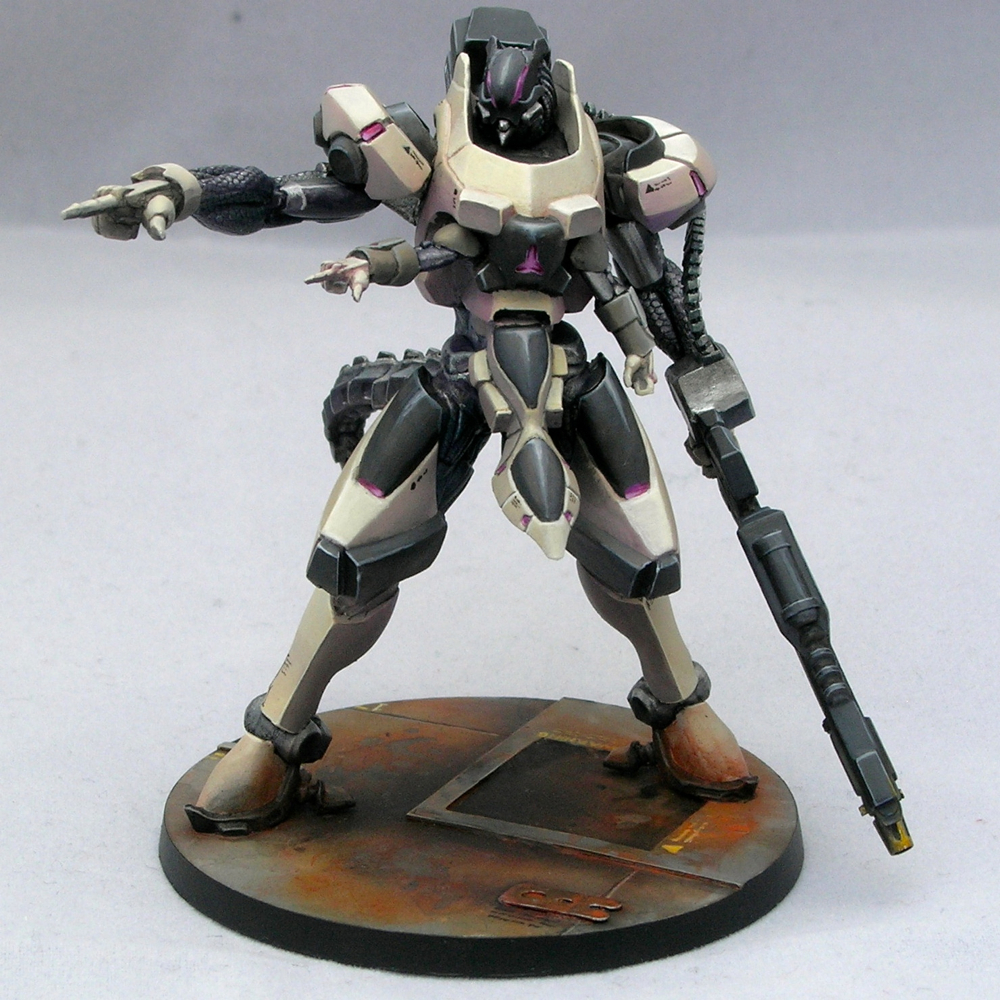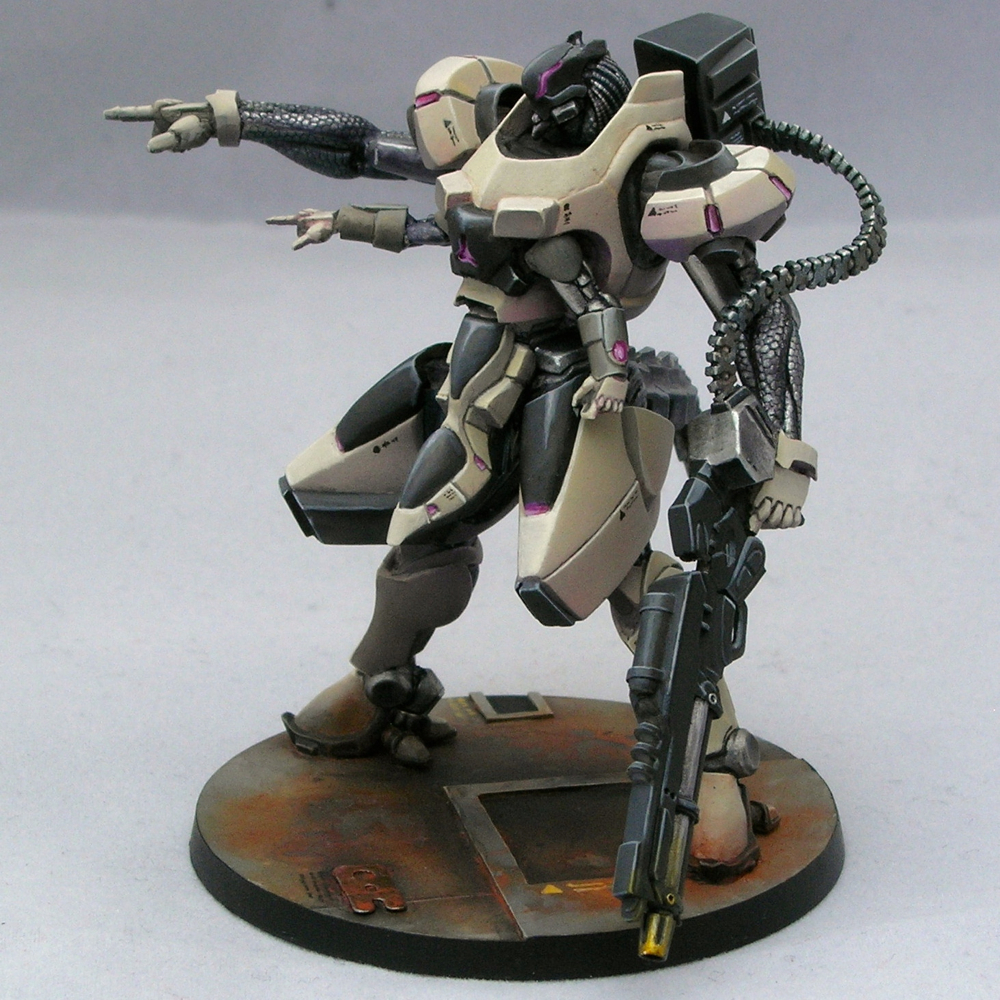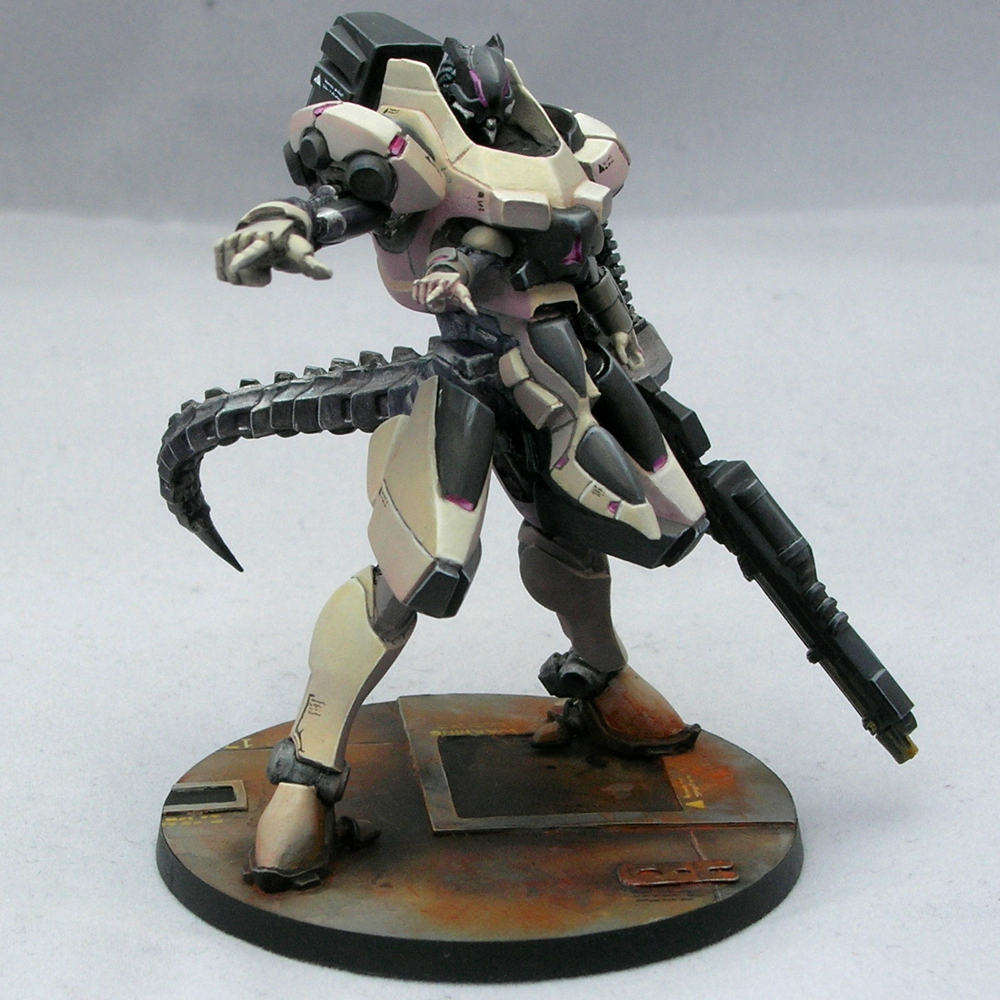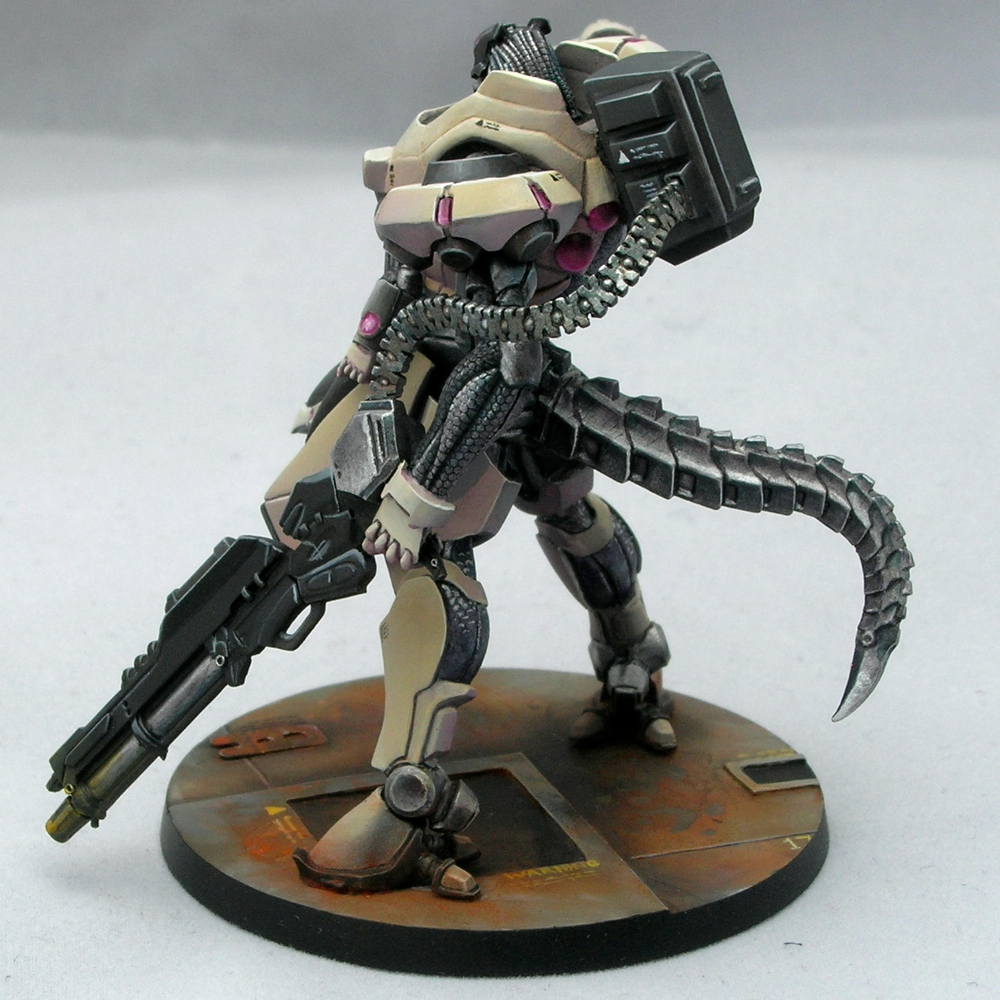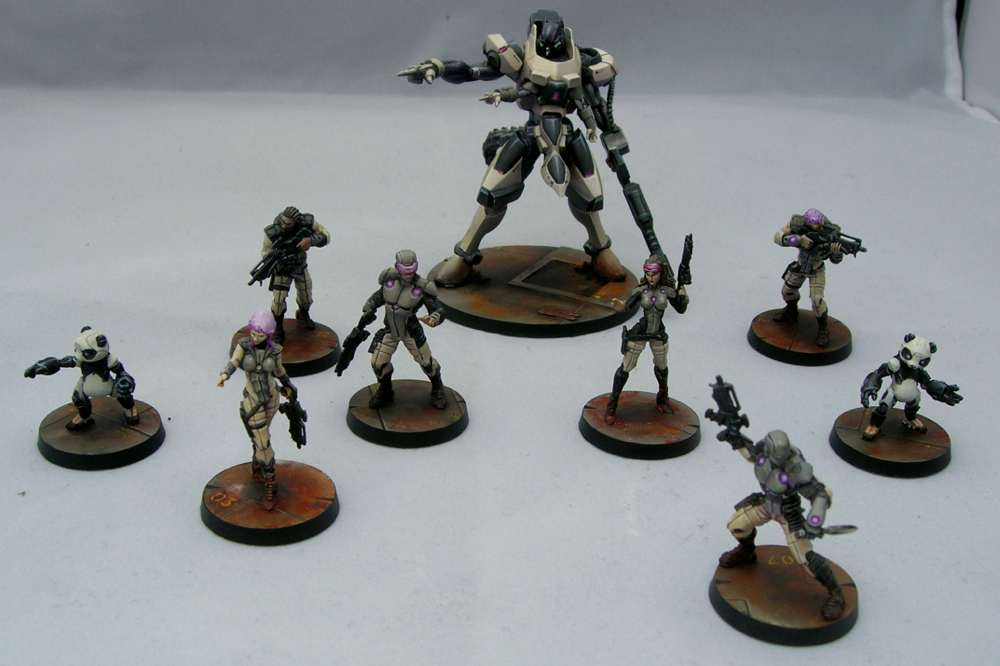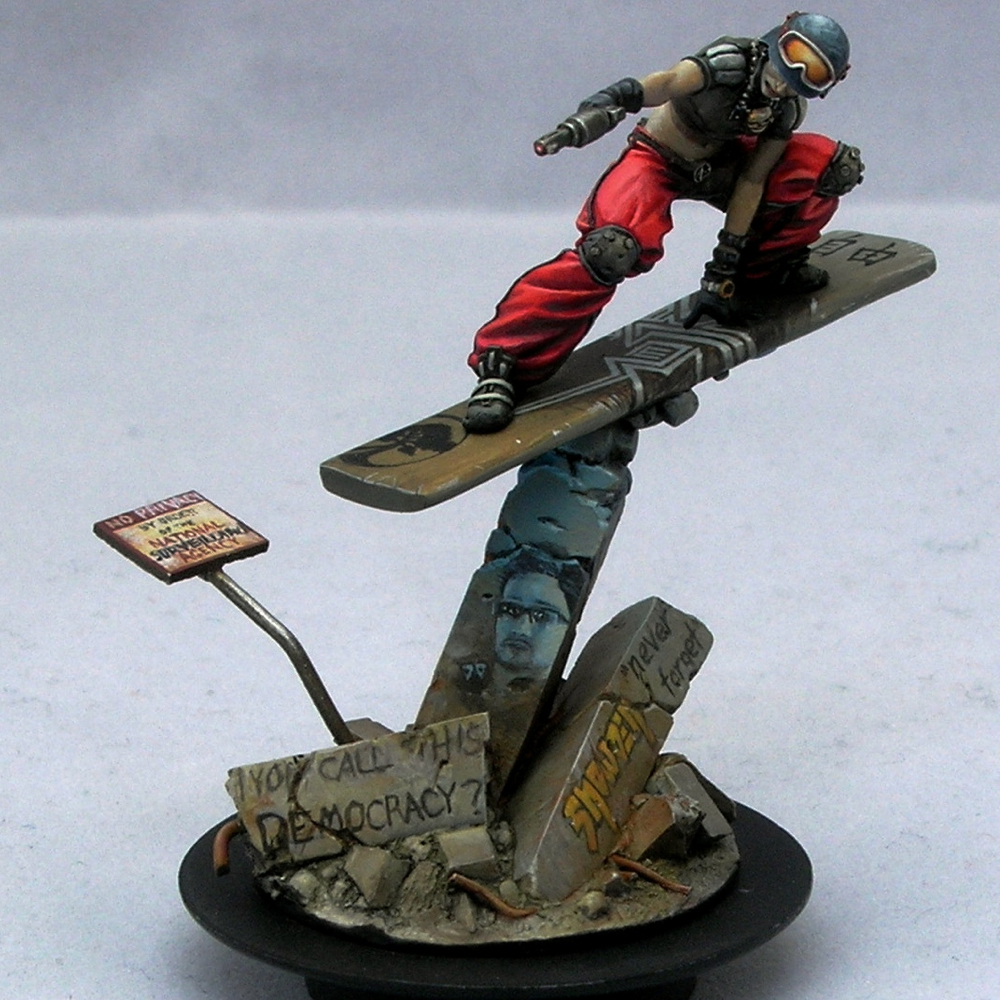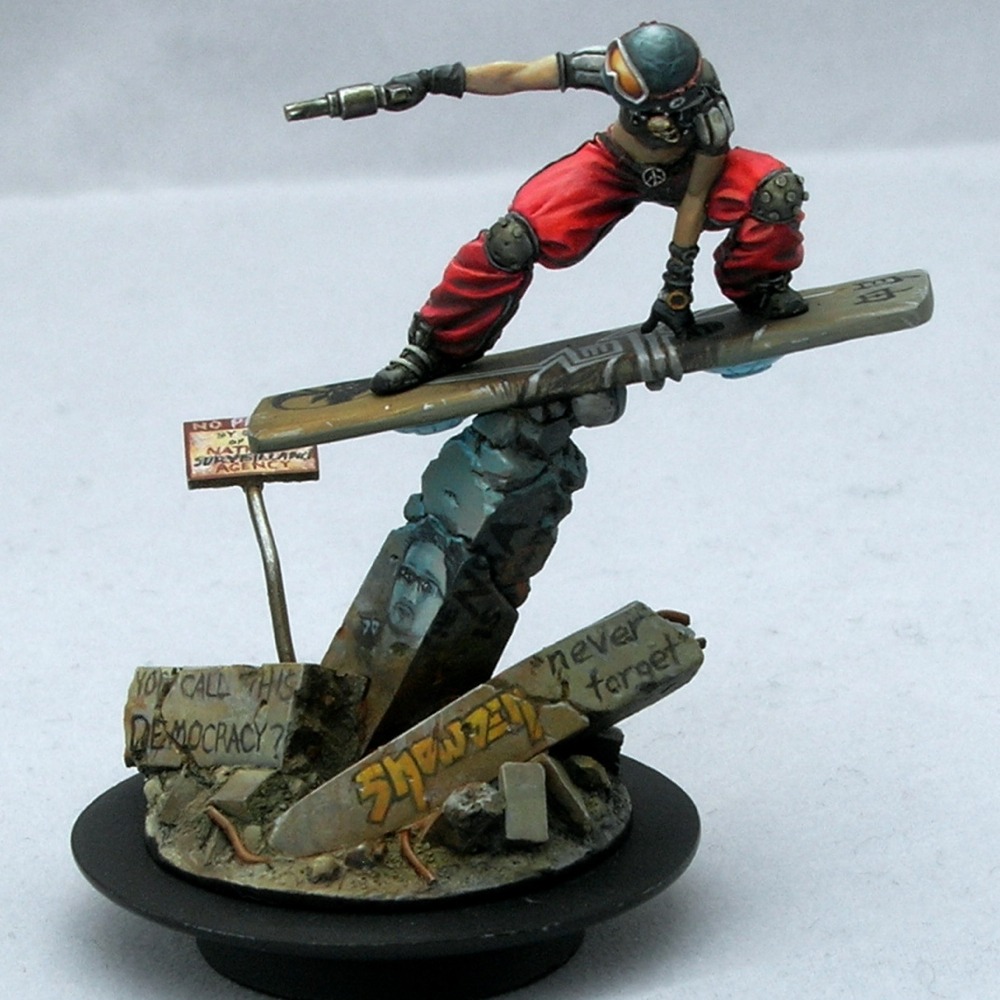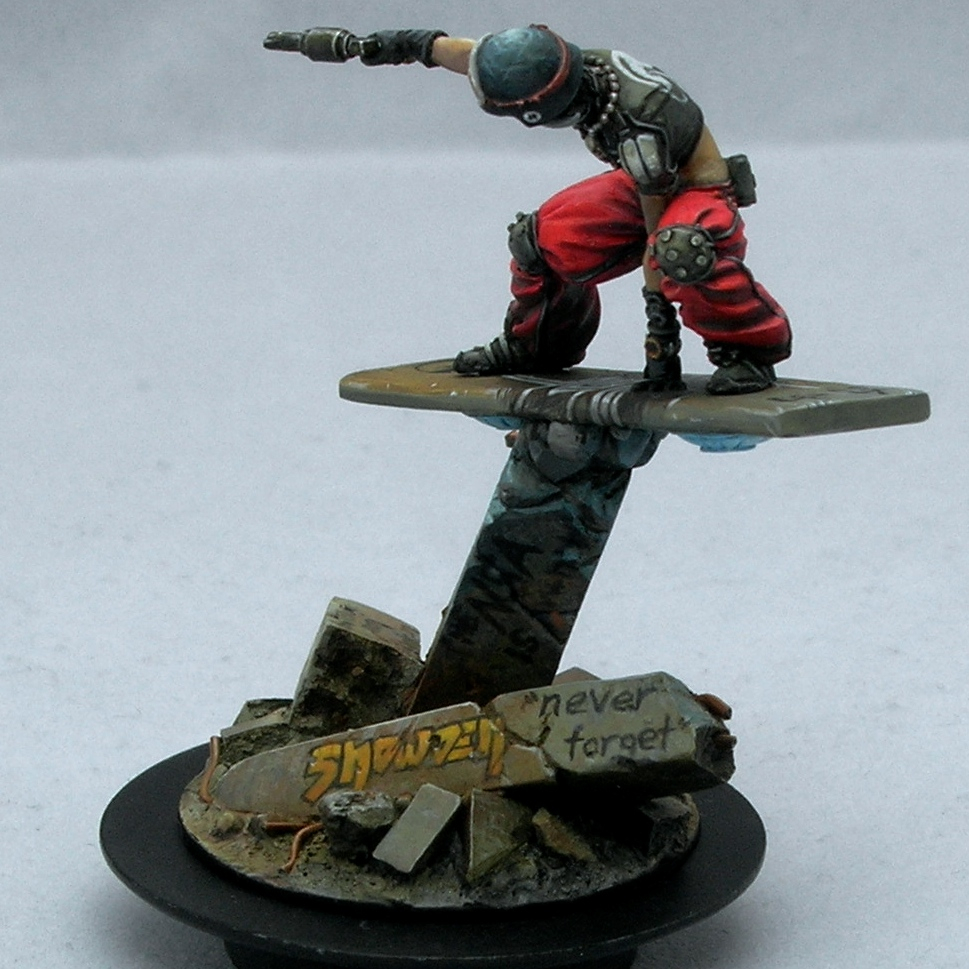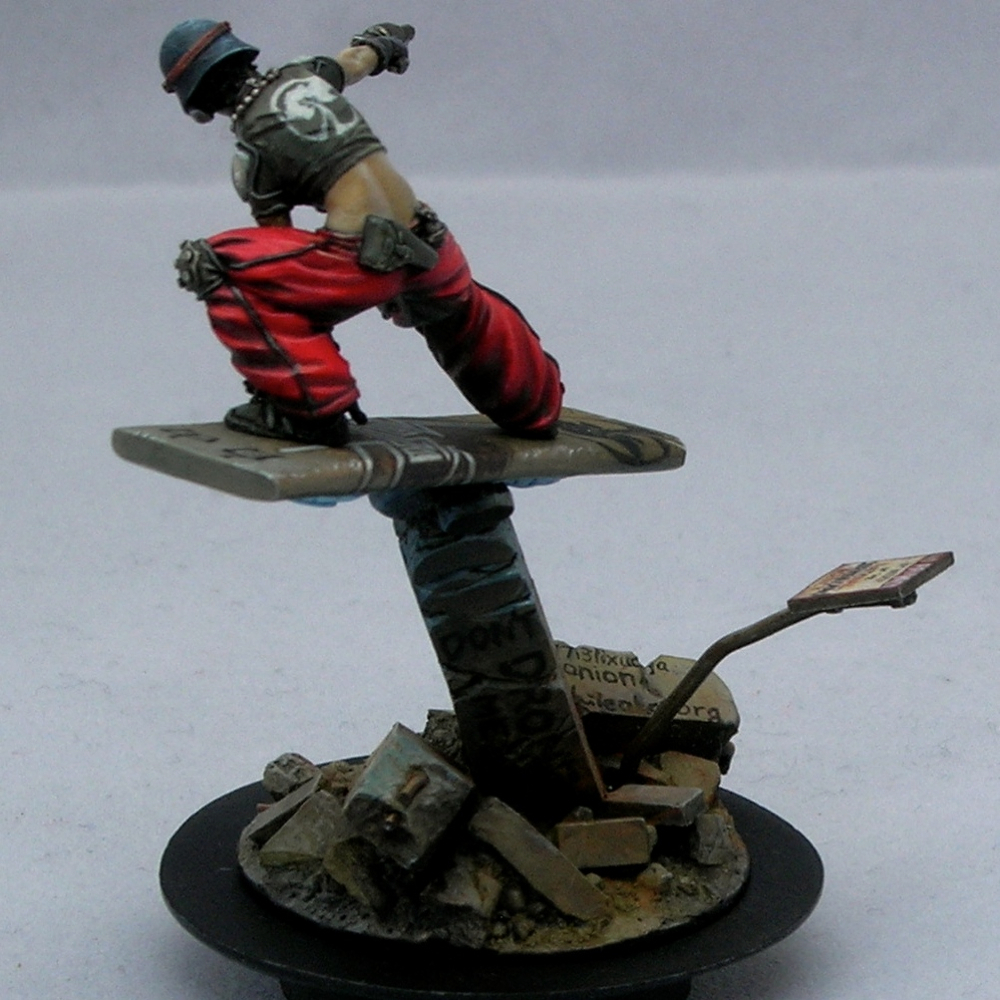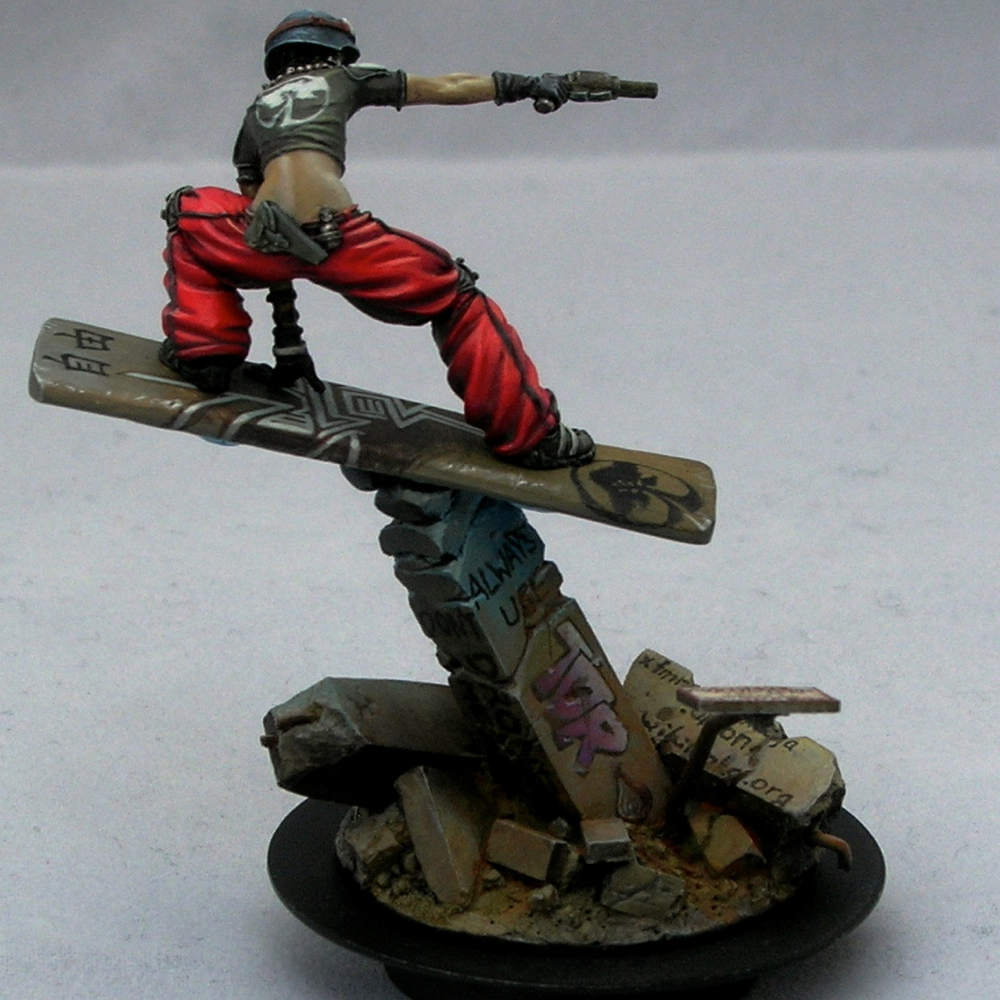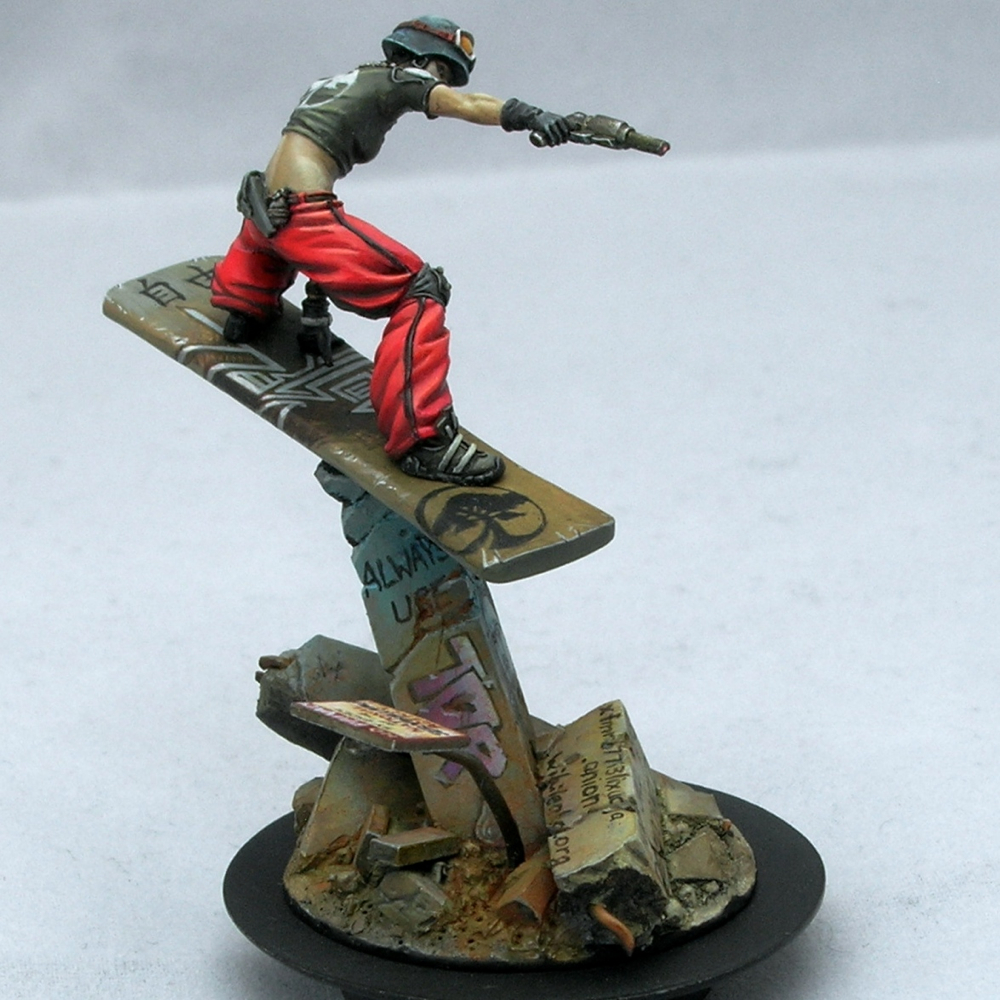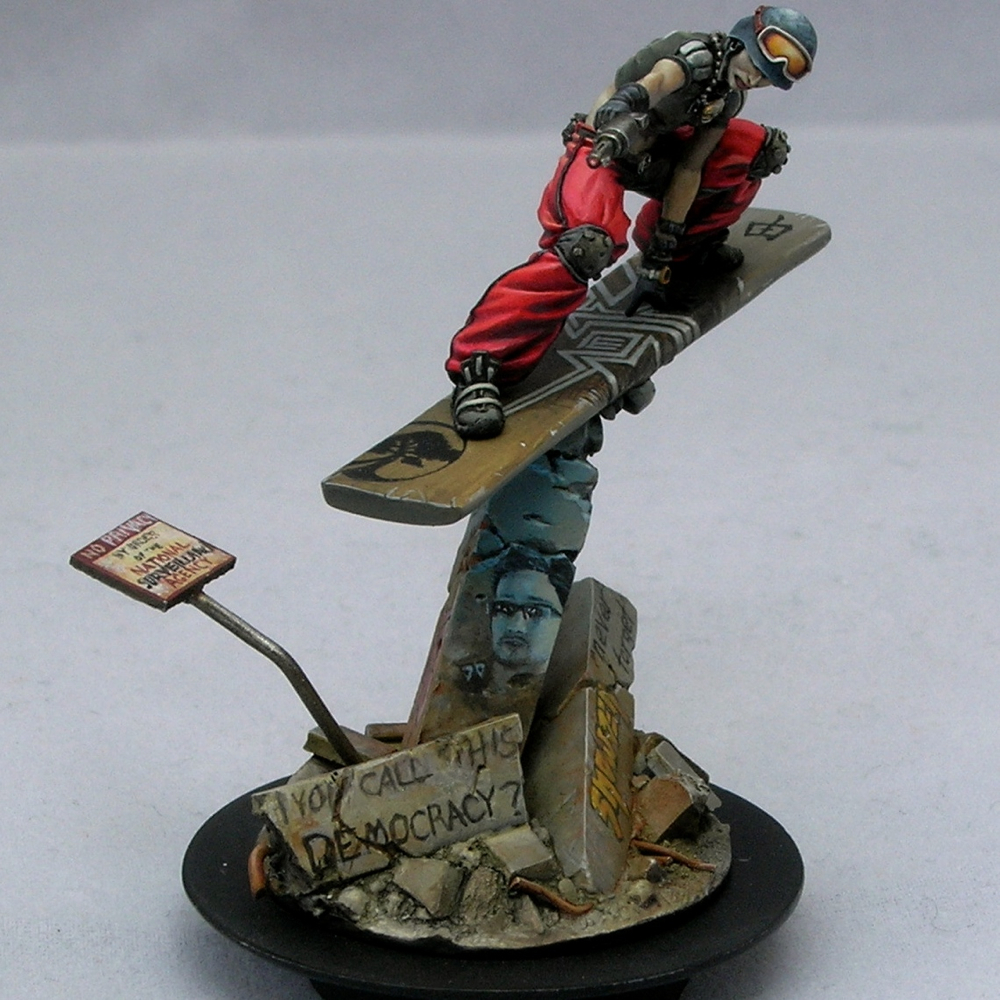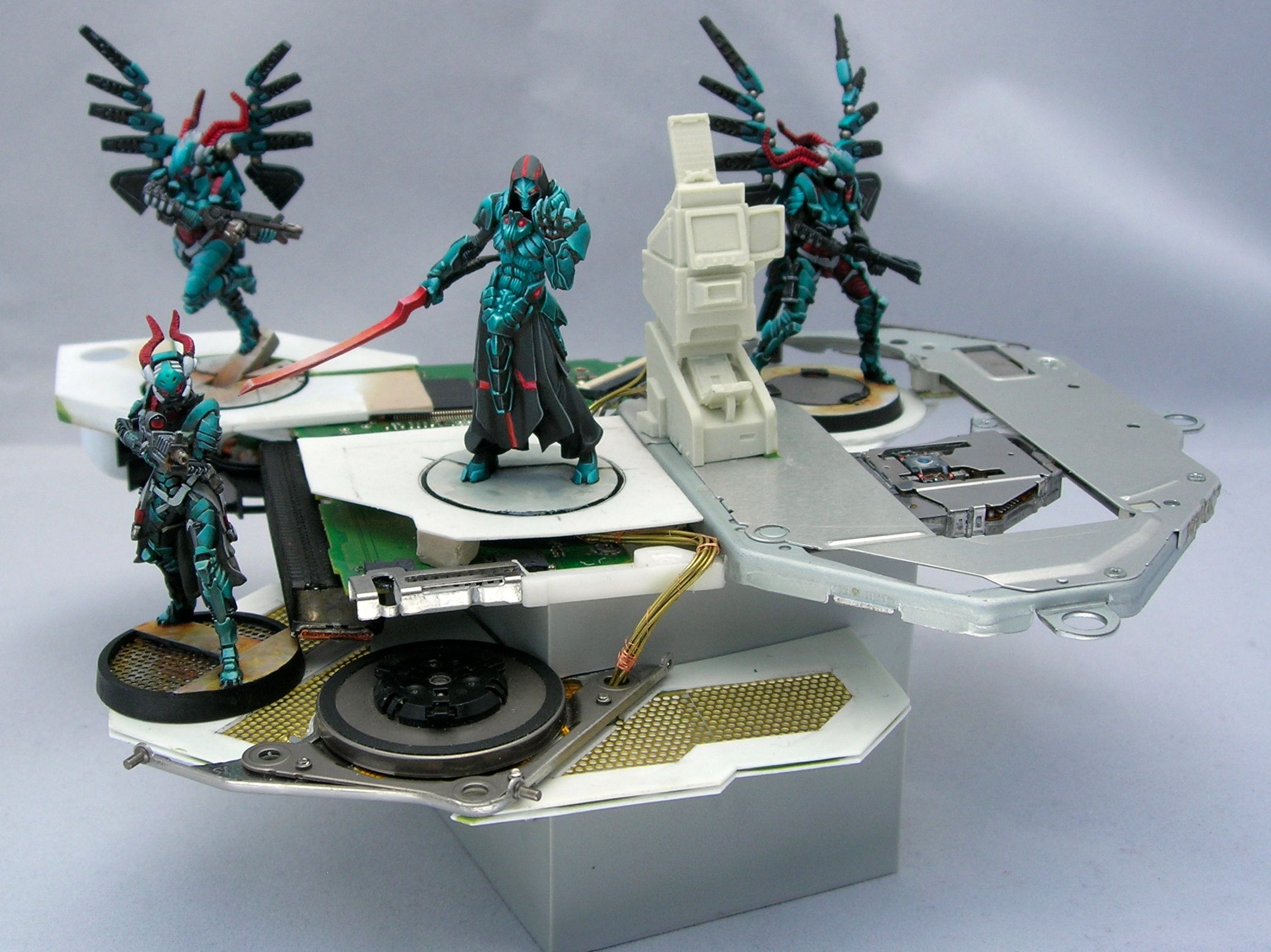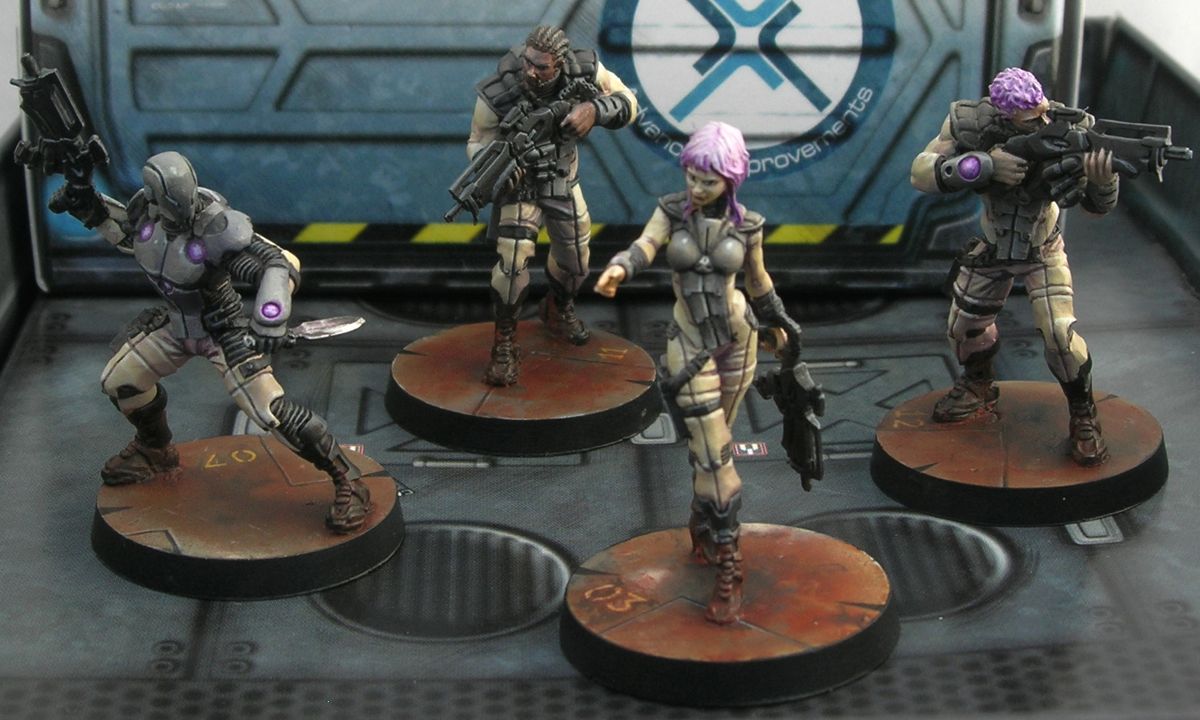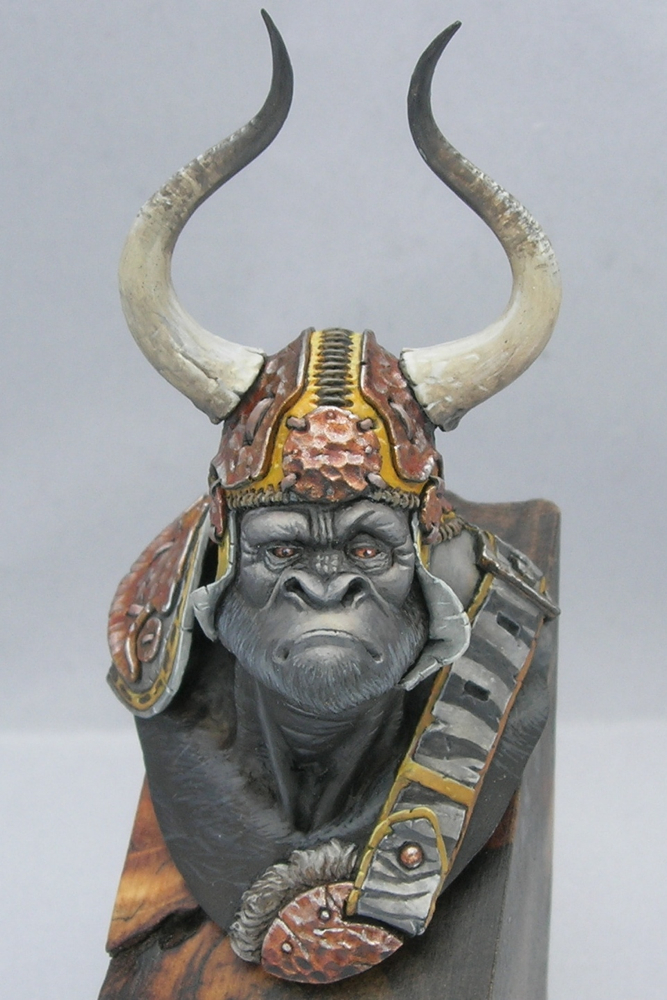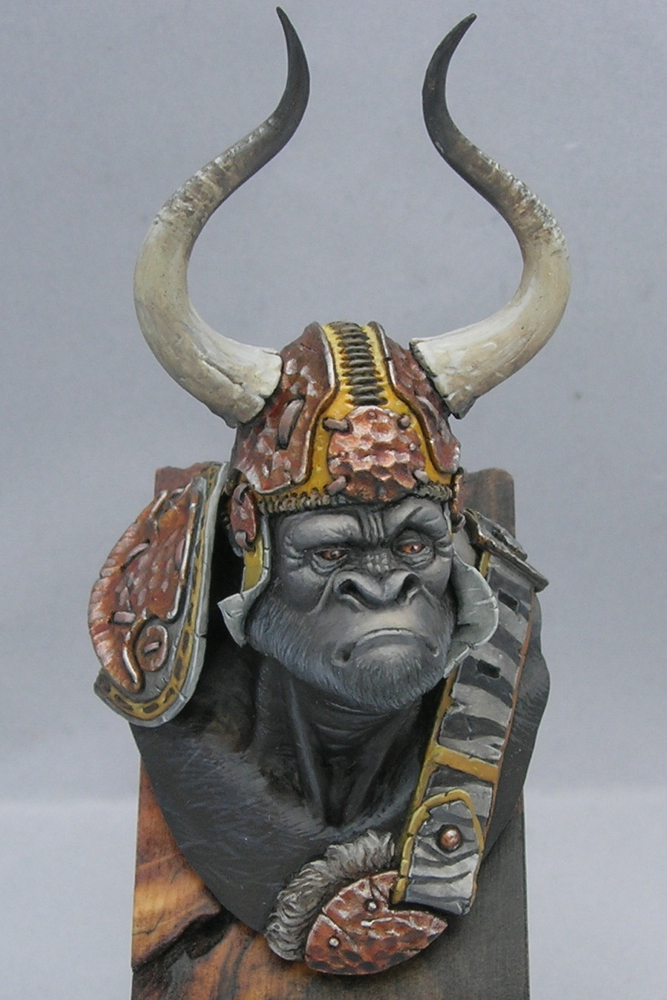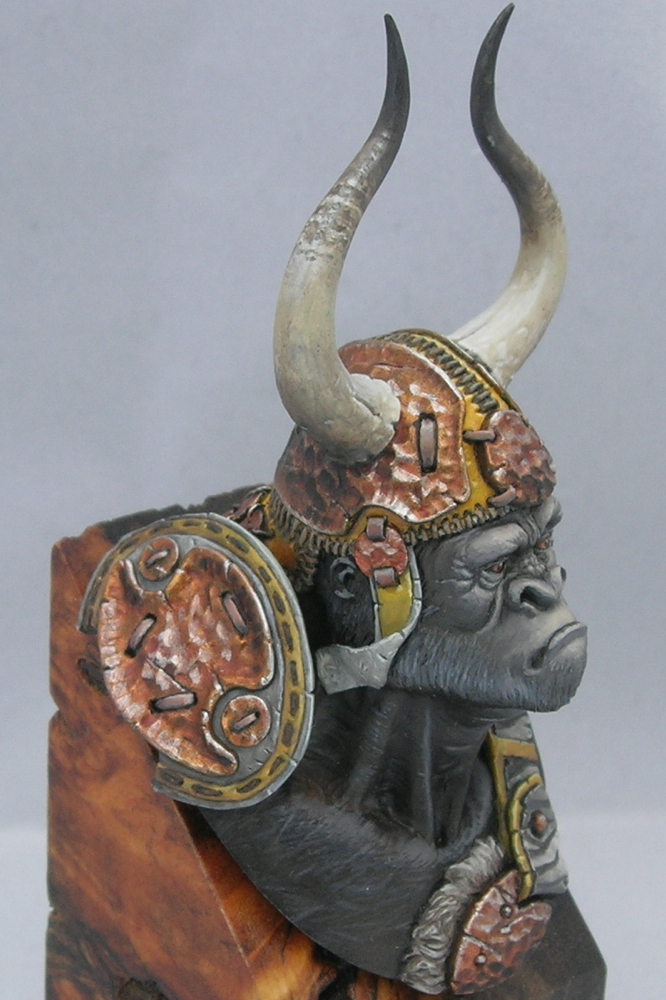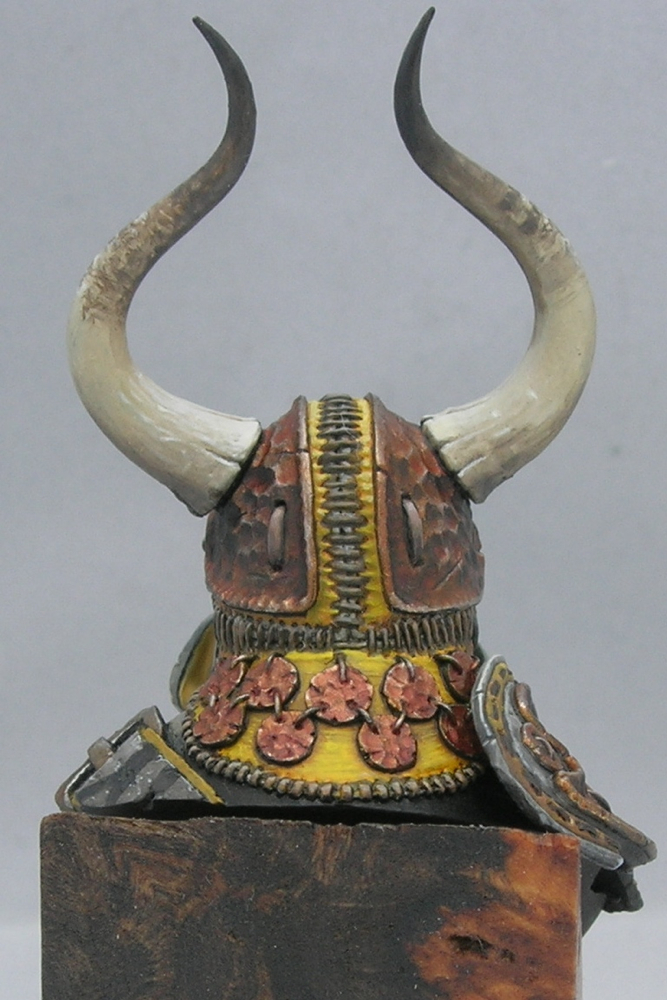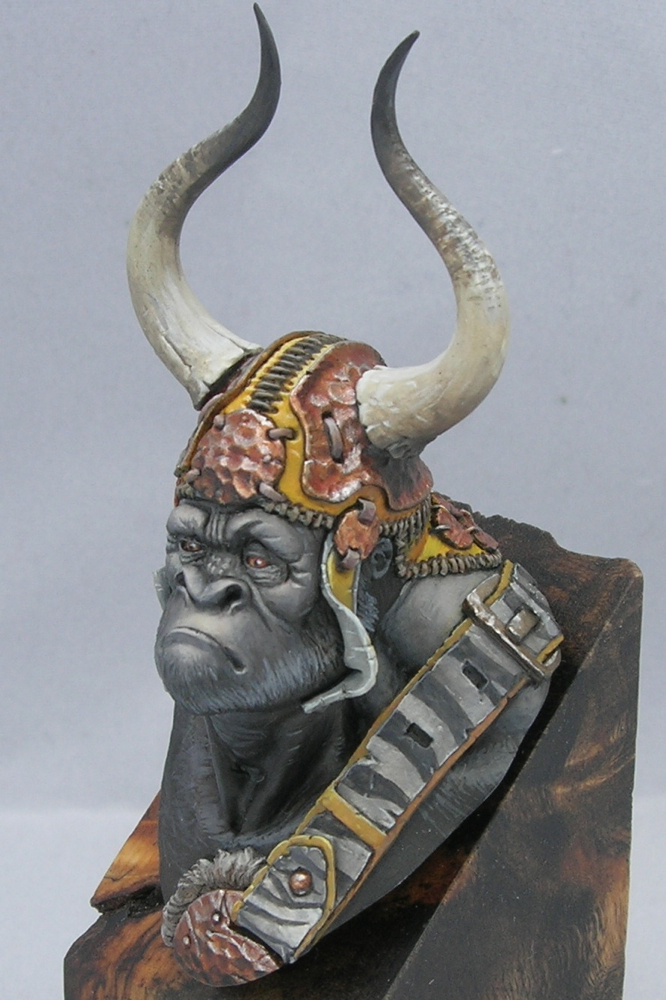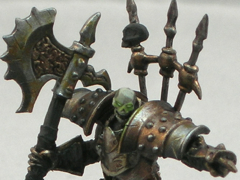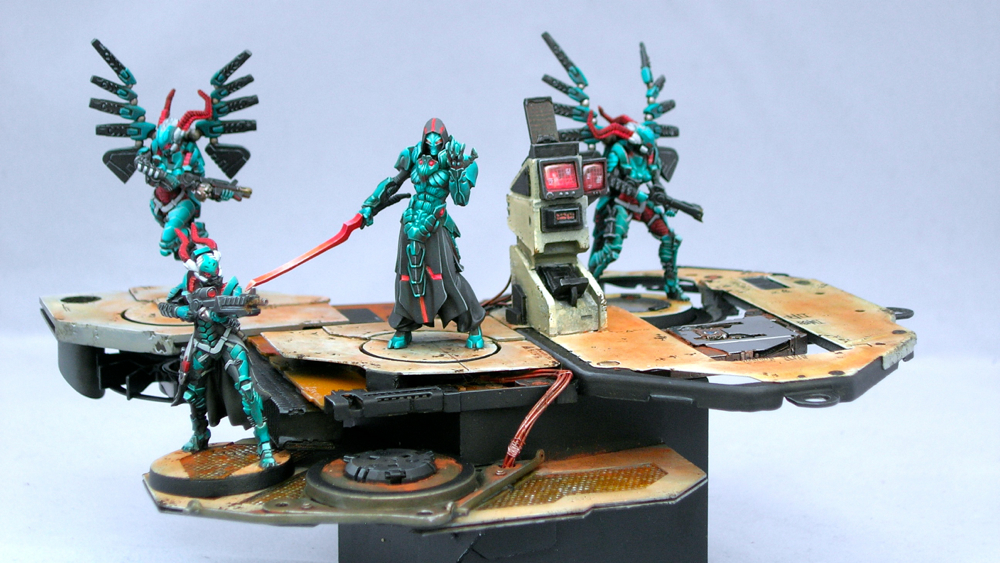
As soon as I saw the new Infinity—Combined Army starter pack in my local game store, I wanted to paint it. In fact, that was the box that ended up getting me started on my recent Infinity kick. I have to say the models are fantastic, light-years ahead of the older Infinity models; they are very easy to clean, and tremendously fun to paint.
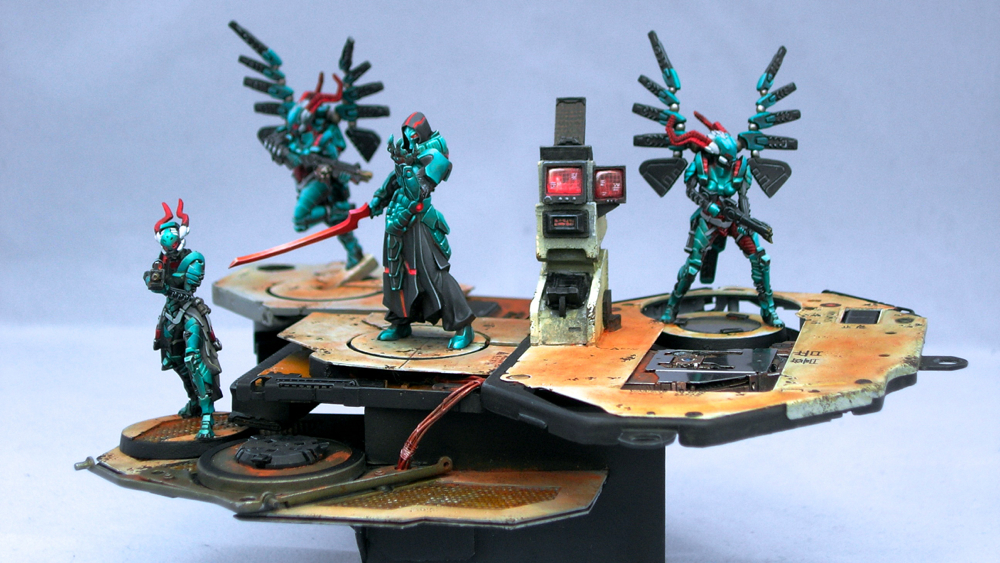
The base was the first thing I built, and is primarily composed of parts of the optical drive and heat sink from my old MacBook (which I replaced once it started constantly crashing), mounted on a resin block from Secret Weapon miniatures. The base presented some interesting engineering challenges, to make it structurally sound where a thin piece of plasticard was sticking out from a resin block and just attached at the edge, so I added some plasticard braces and carved a groove in the resin block for extra support.
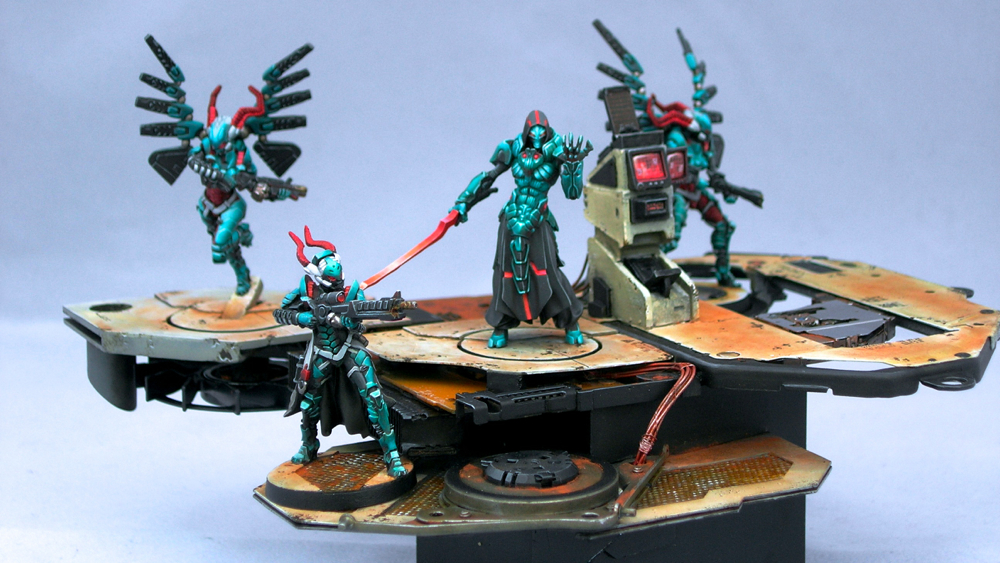
The miniatures are all magnetized to the base, so that they can be removed to be usable as gaming pieces or just be appreciated on their own, but snap nicely onto the base in the appropriate position and orientation for group display. This was especially nice for entering into the Gen Con competition, which requires units to be presented together on a display base. Making everything nice and stable as a unit also makes things safer when being handled by the judges and their minions.
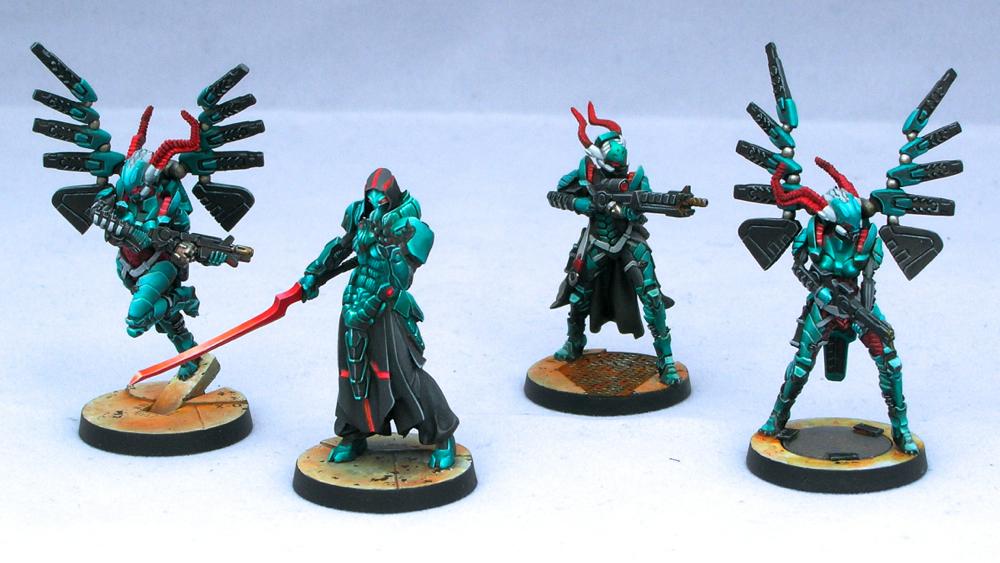
From left to right: Fraacta, Umbra Legates, Maakrep, Fraacta.
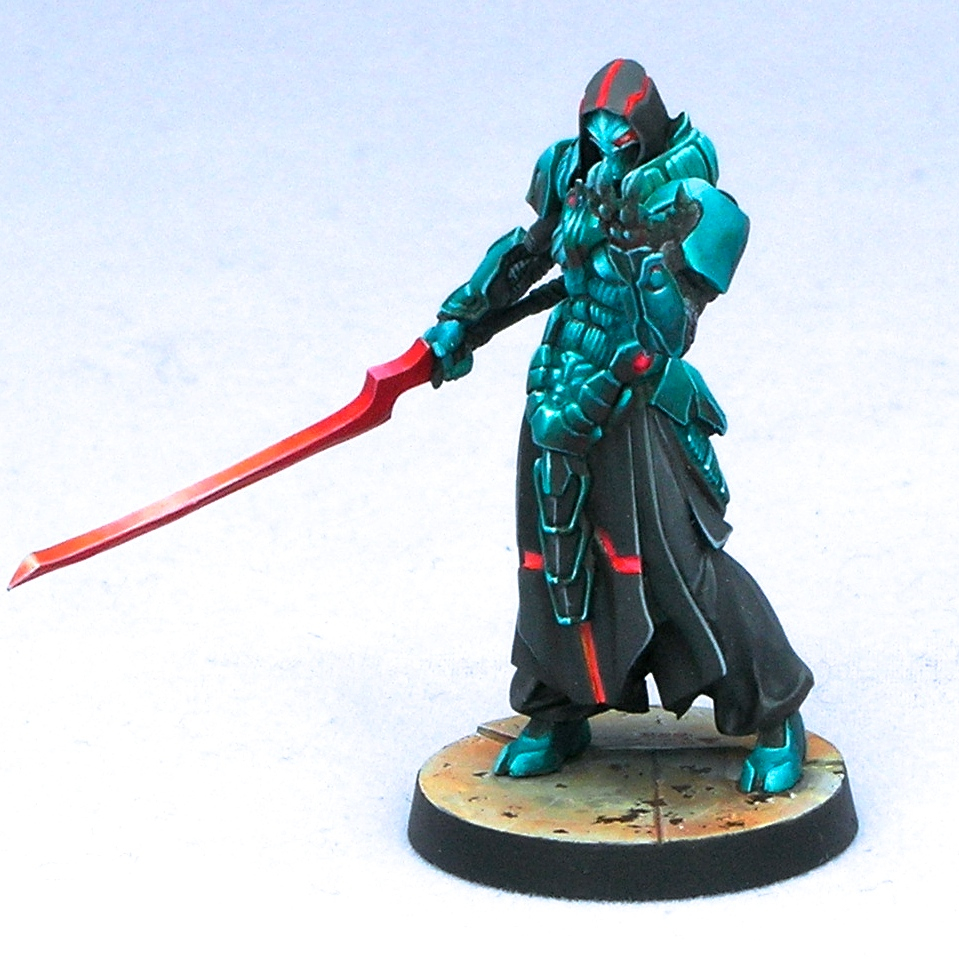
Originally I intended to paint the entire box up as a unit, but ended up dropping the Unidrons and adding an extra Fraacta. The base I built was not really large enough for six models, I wasn’t really happy with the first Unidron I painted up, and I really liked the new Fraacta model that had just come out.
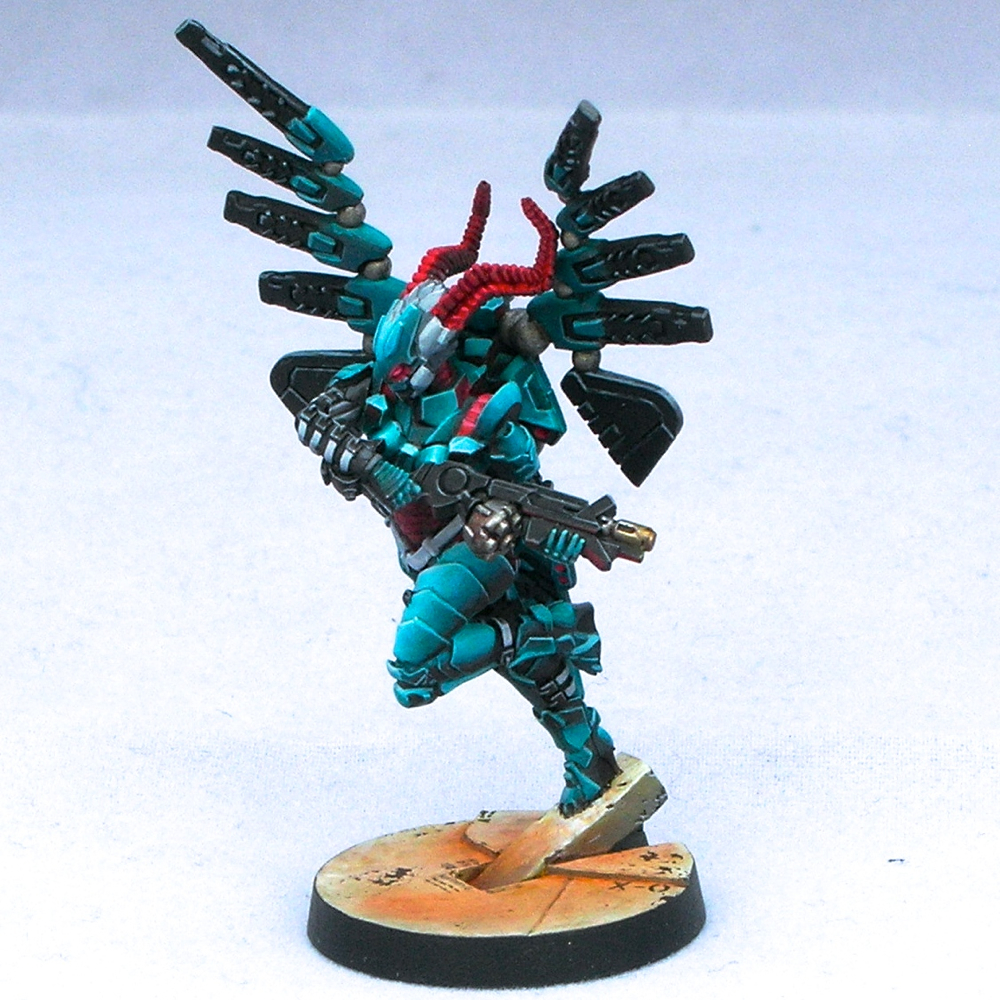
The running Fraacta was the last model I painted, and turned out the best because I had the color scheme down at that point. In the sculpt, the Fraacta is jumping off of some weird, pseudo-organic piece of rock. In order to make it match the base, I had to completely resculpt that rock to look mechanical, and then incorporate it into the base in such a way that it looked at least plausible for it to be mounted at that angle. I ended up cutting a big hole in the base to make it look like a part which could be rotated out to provide access to something underneath.
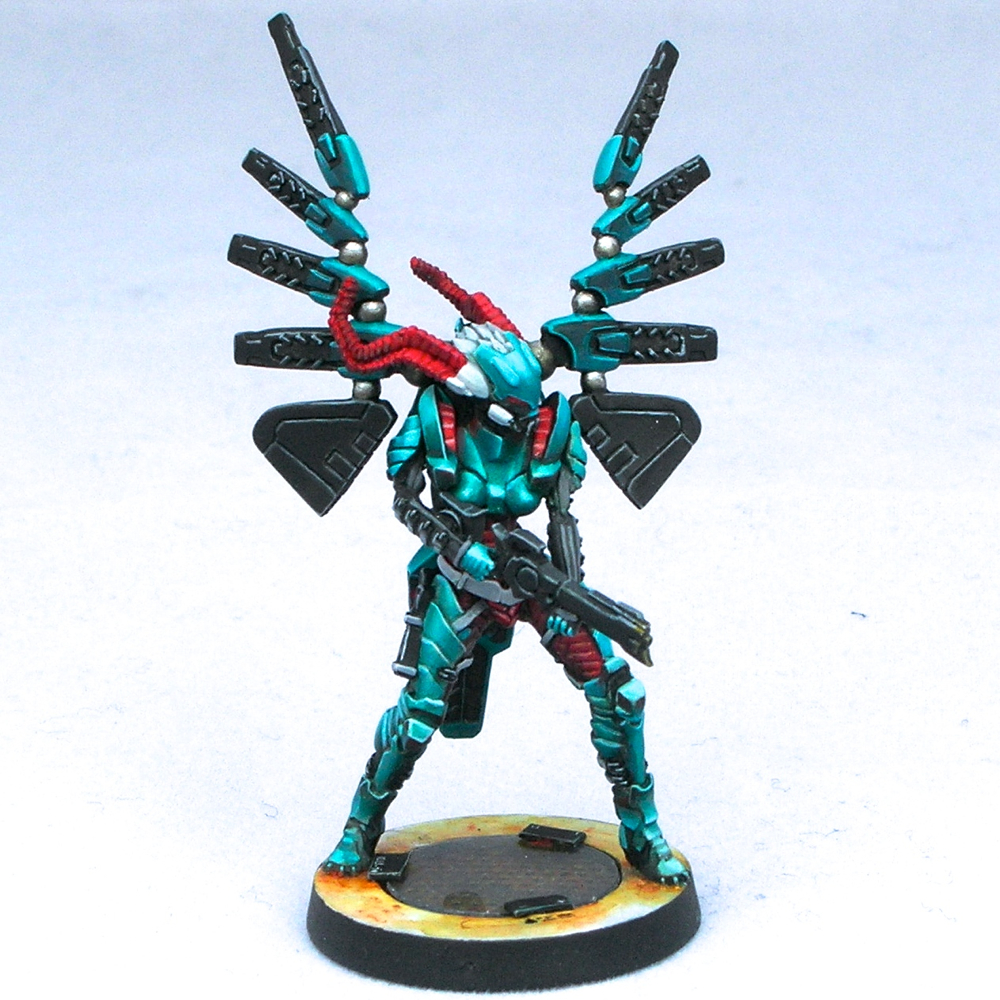
It’s hard to appreciate from the photos, but three of the four models have holes going all of the way through the bases. My favorite is the base of the standing Fraacta, where I carved out a circle from the middle of the base, and mounted a brass-etch grate and a clear piece of plastic (from a blister pack). I think incorporating negative space into most of the miniatures’ bases as well as the group display base makes them hang together really well as a unit.
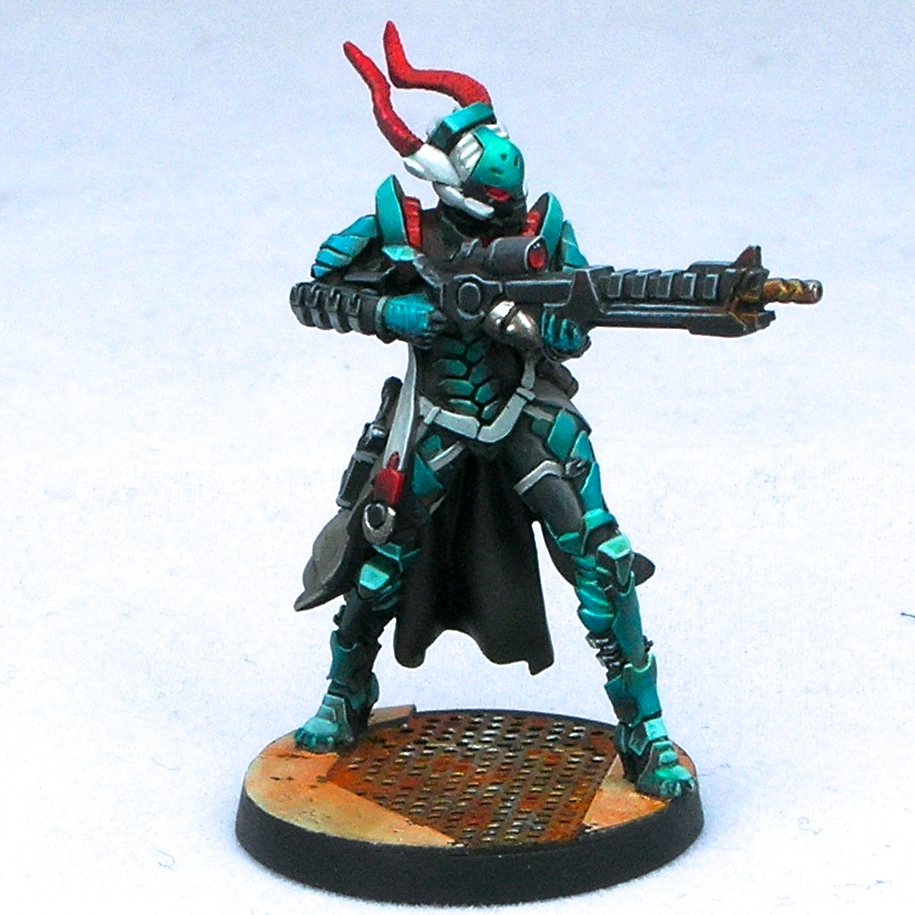
The Maakrep was the first miniature I painted of the group, and ended up much greener than the others. I painted the standing Fraacta second, and that was when I really nailed the color scheme down. I ended up having to go back to the Maakrep and add a lot of turquoise glazes so that the colors would match.
This piece won first place in the unit category of the Gen Con painting competition, and was awarded a gold under their open judging format. Additionally, Angel Giraldez, the studio painter for Infinity, was at the con, and told me that he really liked my entry, which was very flattering. Thanks Angel!
